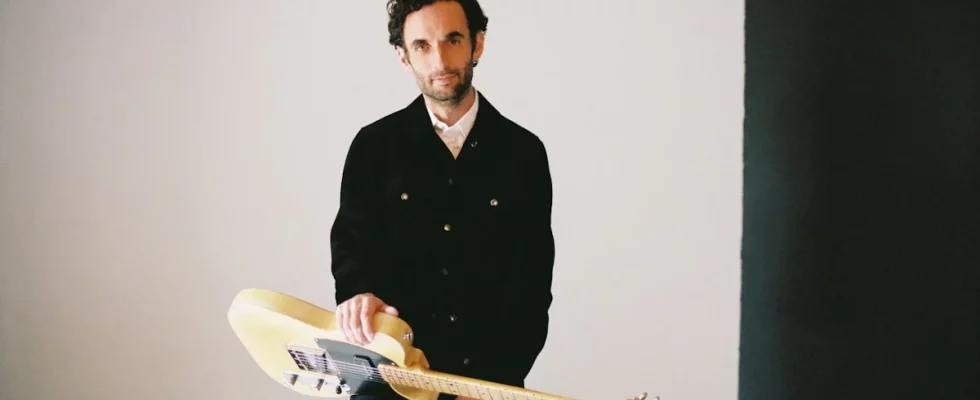Julian Lage is probably the friendliest guitar god since the invention of the electric guitar. His technical skills are far beyond the standards common even in the first division. His musicality shines through in every single note. And yet his concert in Zurich’s “Moods” (and the evening before, as you can hear, also in Munich’s Unterfahrt) with bassist Jorge Roeder and drummer Kenney Wollesen was characterized by a monumental calm that was nothing like the rest of this concert instrument also had to do with the grand gestures that are common in jazz.
It started right away with “Tributary”, the first track from his “View With a Room” album, with which he rose a step further into the pantheon two years ago because now world fame was added to it. If you listened to the album in “heavy rotation” back then, because he had transposed the magic of his playing in its purest form into a recording, the difference between studio and stage at Moods was particularly clear. Then he went from zero to a hundred into a high tension that developed such power precisely because he channeled his excess of ideas and energy and virtuosity into a search for beauty that had nothing to do with volume, effects, or even the crescendos of the had to do with emotionality.
The Telecaster is also the favorite guitar of Bob Dylan, Keith Richards and Bruce Springsteen
Lage plays a Fender Telecaster, which lays a foundation of earthiness with its spartan sound. That’s why it’s the favorite guitar of Bob Dylan, Keith Richards and Bruce Springsteen, who always dug deep into the roots of American culture behind the grand gestures in rock music. As a kind of fourth band member, Lage brought along the sound engineer Mark Goodell, who was also responsible for the crystalline sound on his four Blue Note albums. The effort was worth it.
Lage’s playing lives from this sound, which he keeps as pure as possible. Unlike most guitar gods, he uses virtually no effects pedals. His setup only consists of a reverberator, a signal amplifier and a tuner. This all leads into a Fender tube amplifier and then into the mixing console, where Goodell perfects Lage’s sound right down to the overtones and sub-frequencies.
In the Guitar World Magazine explained He gave his ascetic stage equipment to his guitar colleague Cory Wong. He wrote: “In particular, he says that effects pedals disrupt his musical ‘choreography’ and break the tiny, ‘millisecond-long’ connections between him and the guitar.”
But it is precisely this connection that is the magical moment in Lage’s game. You could hear that straight away with the piece “Tributary” mentioned. It begins with arpeggios, harmonic tones and chord progressions from which he worked out this beauty, which is never as prominent in his room as it is with Pat Metheny, for example, but is always the result of a search that takes place live in front of the listeners. He pulls and pushes his notes and chords over the rhythm section with such sensitivity that you then understand that his technique doesn’t even allow a delay time of milliseconds.
You could see this direct connection with his instrument. He kept waving the guitar neck around the room, like someone rocking in his chair just before the Eureka moment. And the moments just bubbled up from his instrument, flanked by the congenial rhythm section, which was given space but was undoubtedly there to carry him through his stream of ideas.
The SZ editorial team has this article a content from YouTube enriched
To protect your data, it was not loaded without your consent.
I agree that mine Content from YouTube are displayed. This means that personal data is transmitted to the operator of the portal for usage analysis. You can find more information and a cancellation option atsz.de/data protection.
In between he stepped up to the microphone a few times and seemed amused by what had flowed out of his Telecaster. He thanked us again very much for allowing him to play at “Moods” again. Apparently they do that more often here, which is understandable. On the one hand, not only because the sound system is so good (it has long been the same in other clubs), but because an ambience with the elegance of a cocktail bar has been created here in a much larger metropolis than Zurich, somewhere between the Kaschemmen club and the concert hall closes a gap.
The cheering at the end was much louder than the concert. The situation and the band bowed, the star with an almost awkwardly friendly smile. The encore was another short fireworks display. Then the magical moment of that spring night was over again. Way too early.

